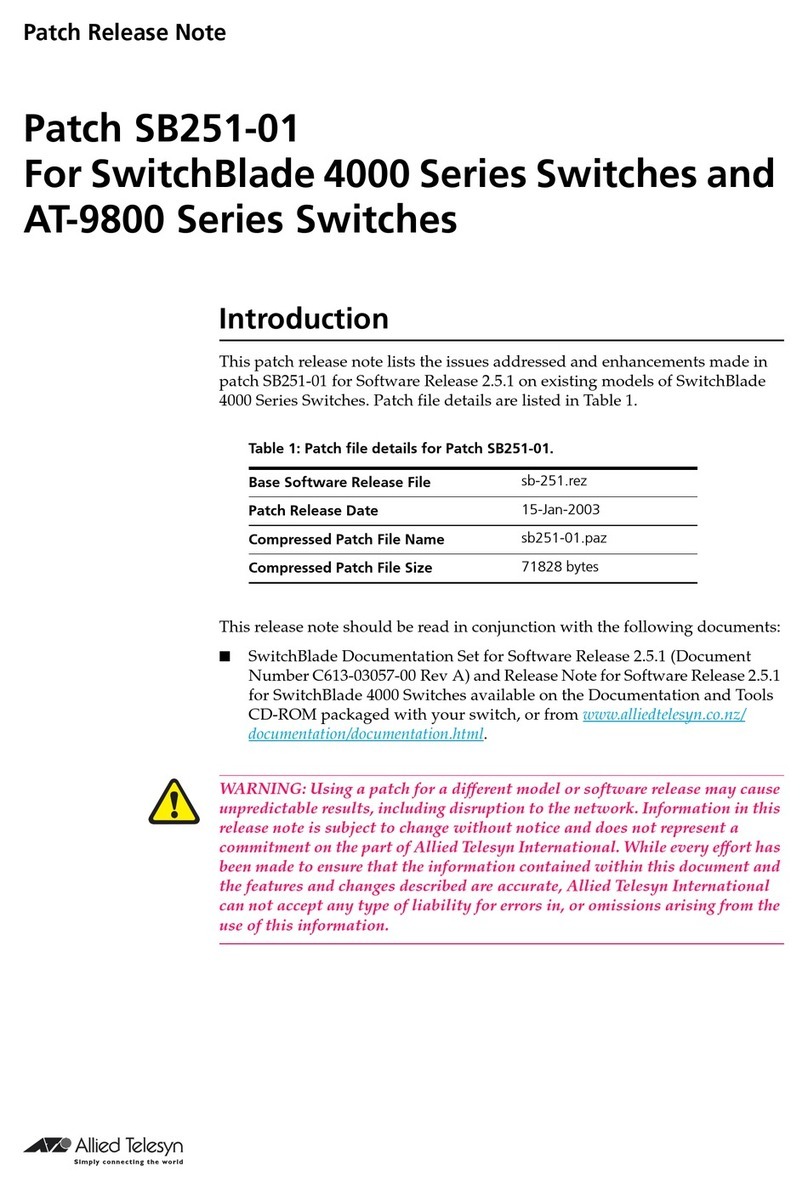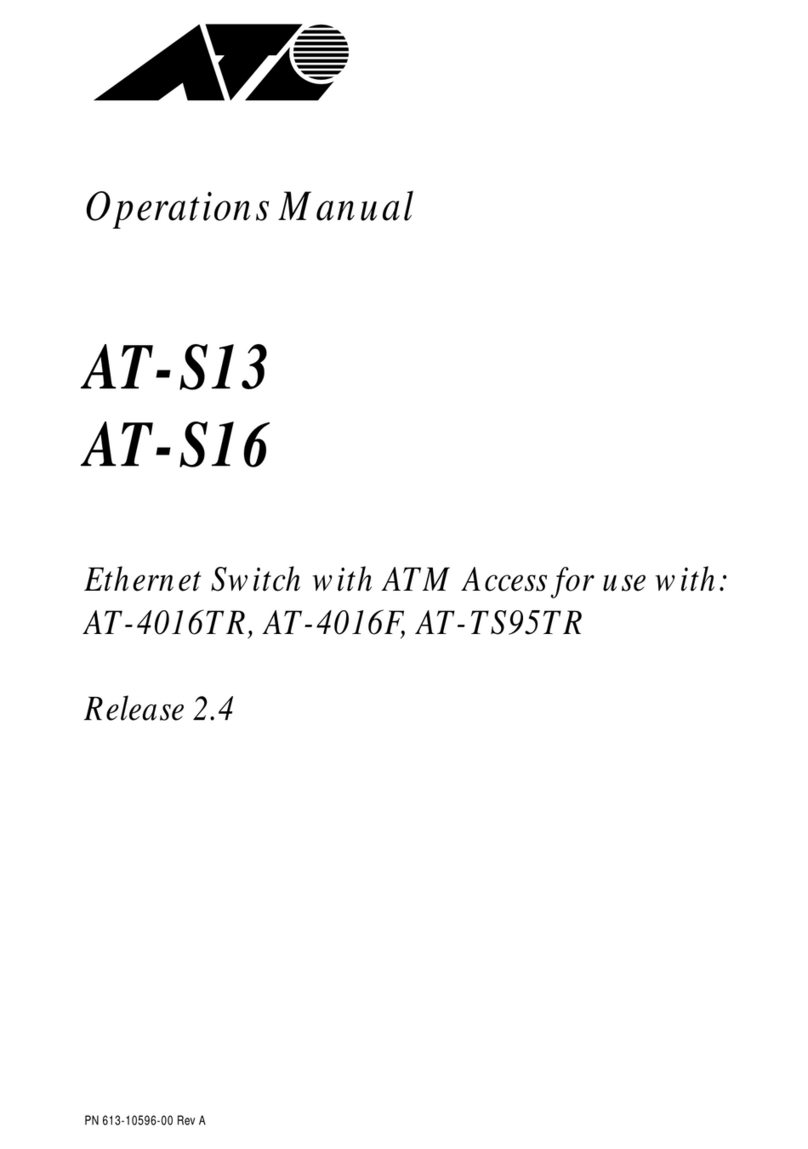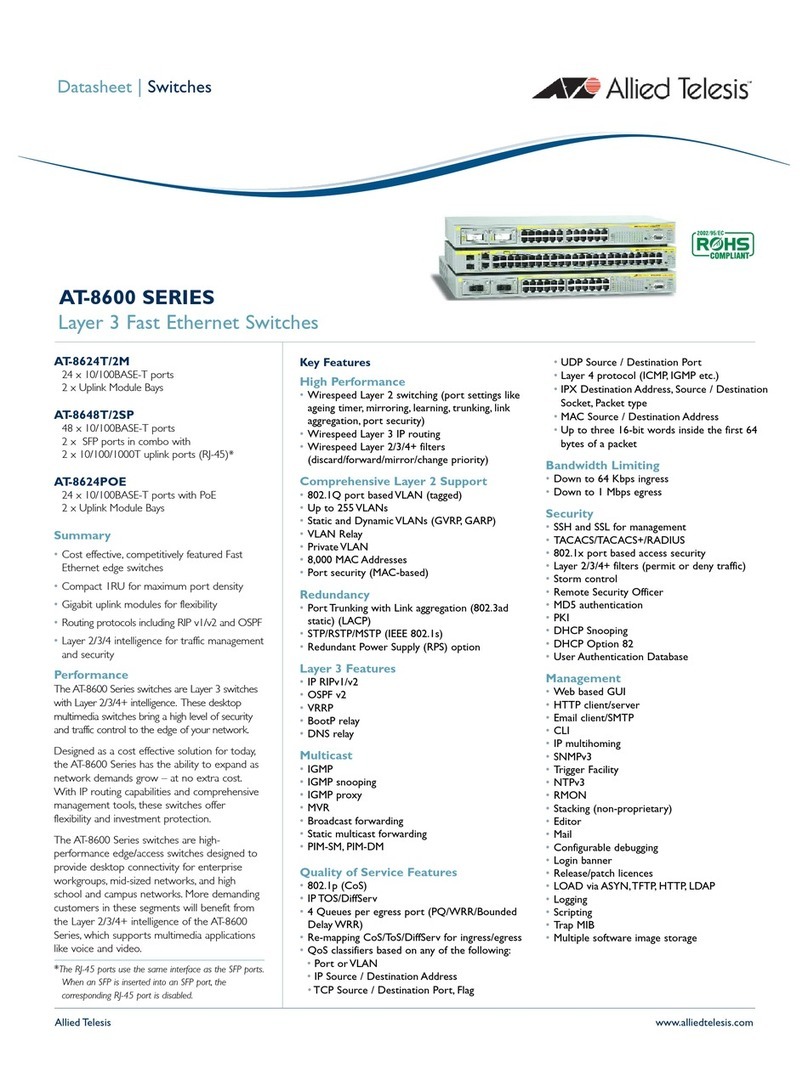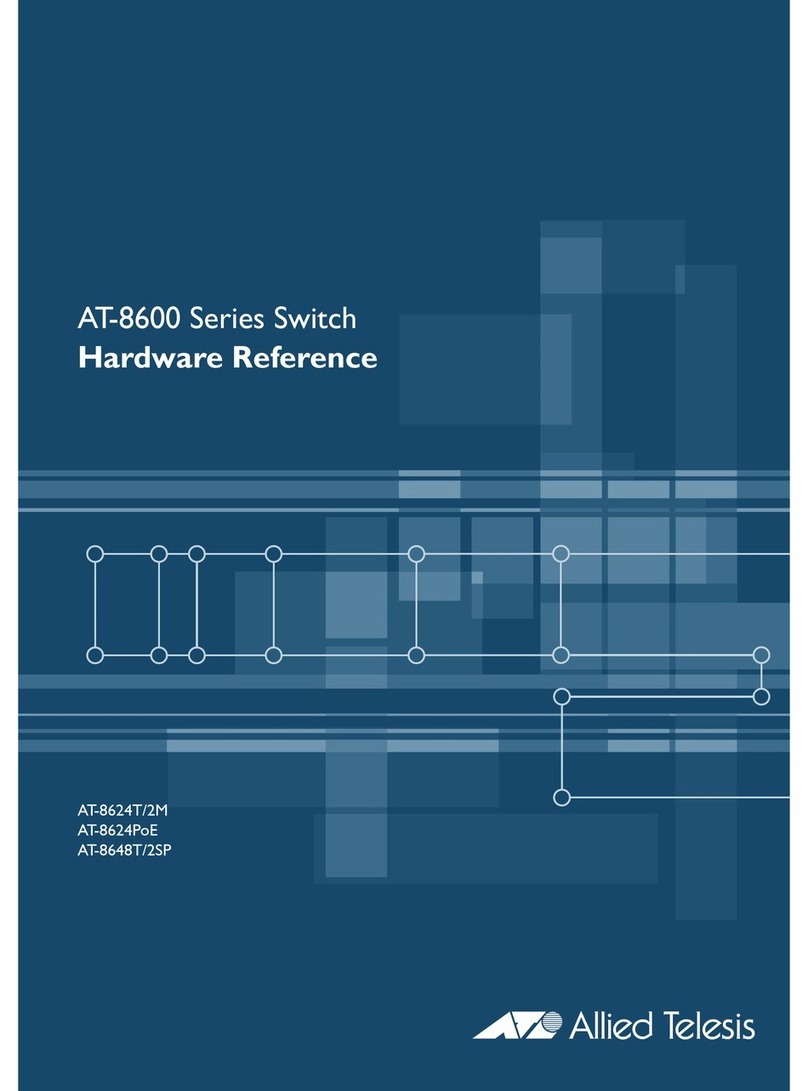Allied Telesis Switchblade AT-x900-12 User manual
Other Allied Telesis Switch manuals
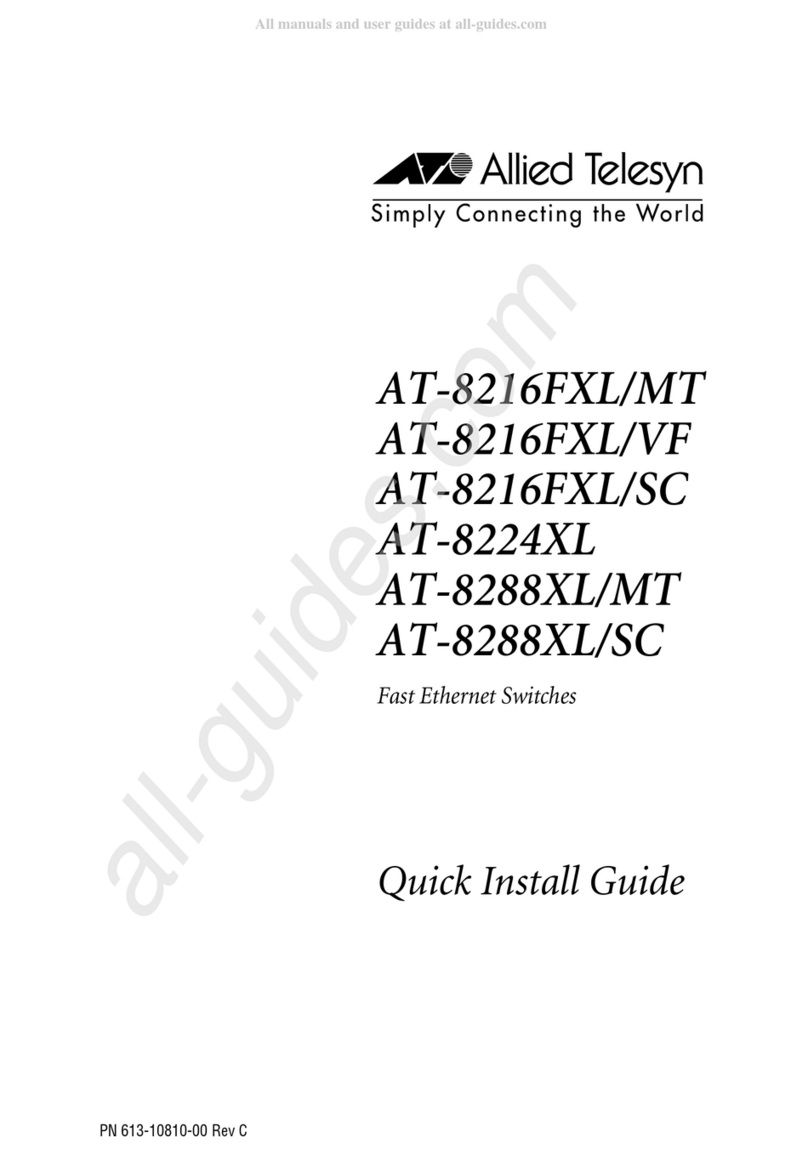
Allied Telesis
Allied Telesis AT-8224 User manual

Allied Telesis
Allied Telesis AT-9108 User manual
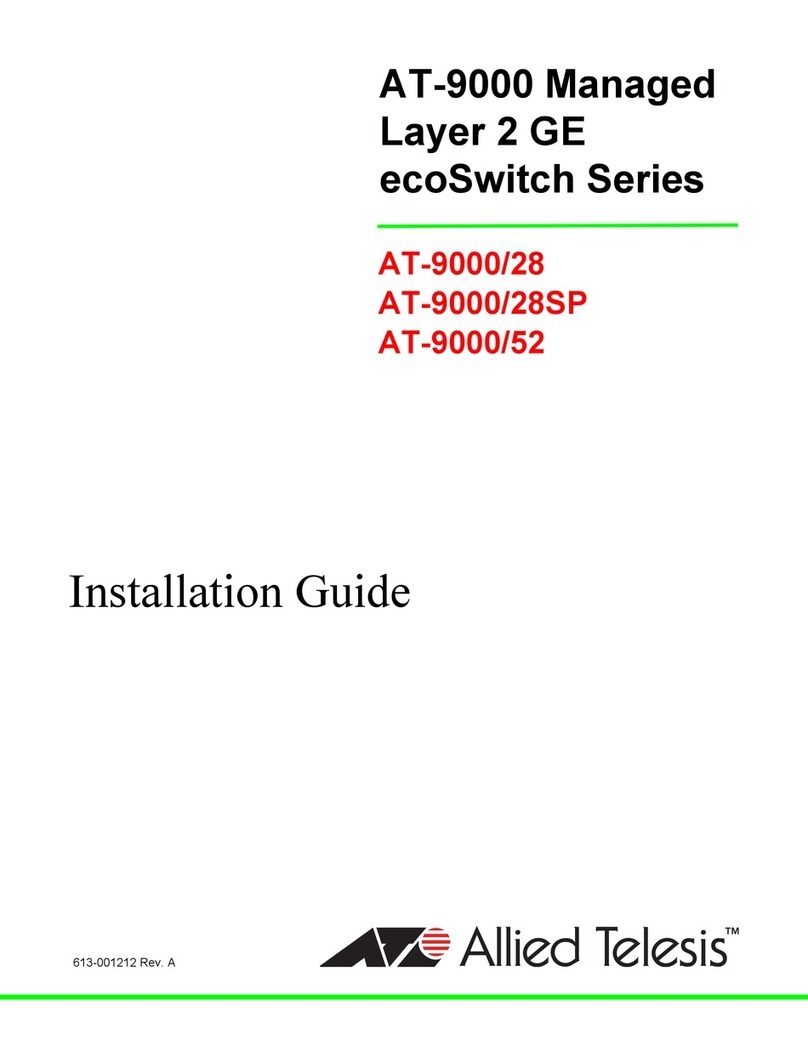
Allied Telesis
Allied Telesis AT-9000/28 User manual
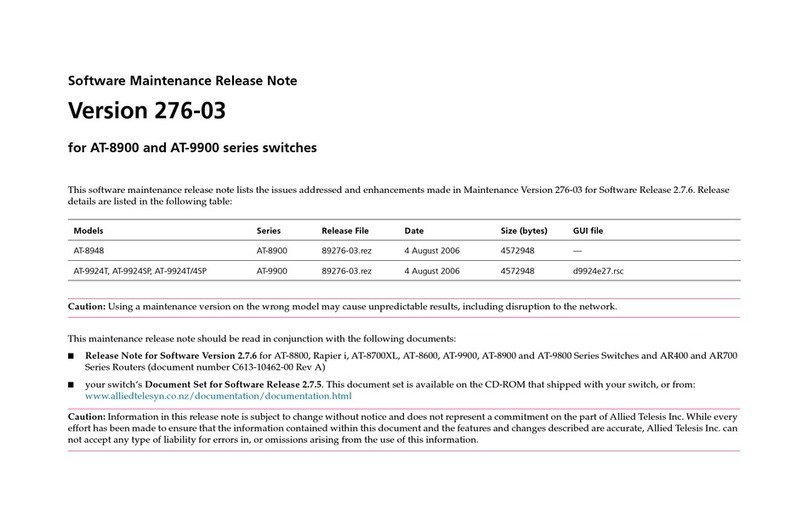
Allied Telesis
Allied Telesis AT-9900 Series Instruction Manual

Allied Telesis
Allied Telesis GS910 Series User manual

Allied Telesis
Allied Telesis AT-8012M User manual
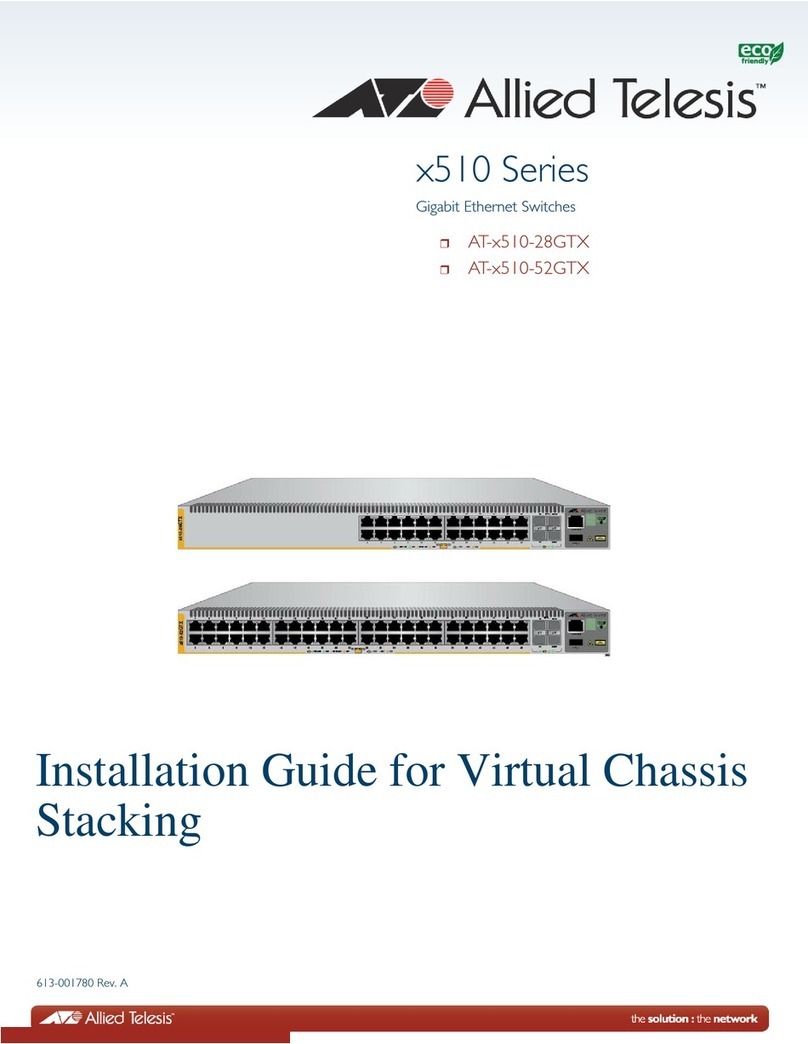
Allied Telesis
Allied Telesis AT-x510-28GTX User manual
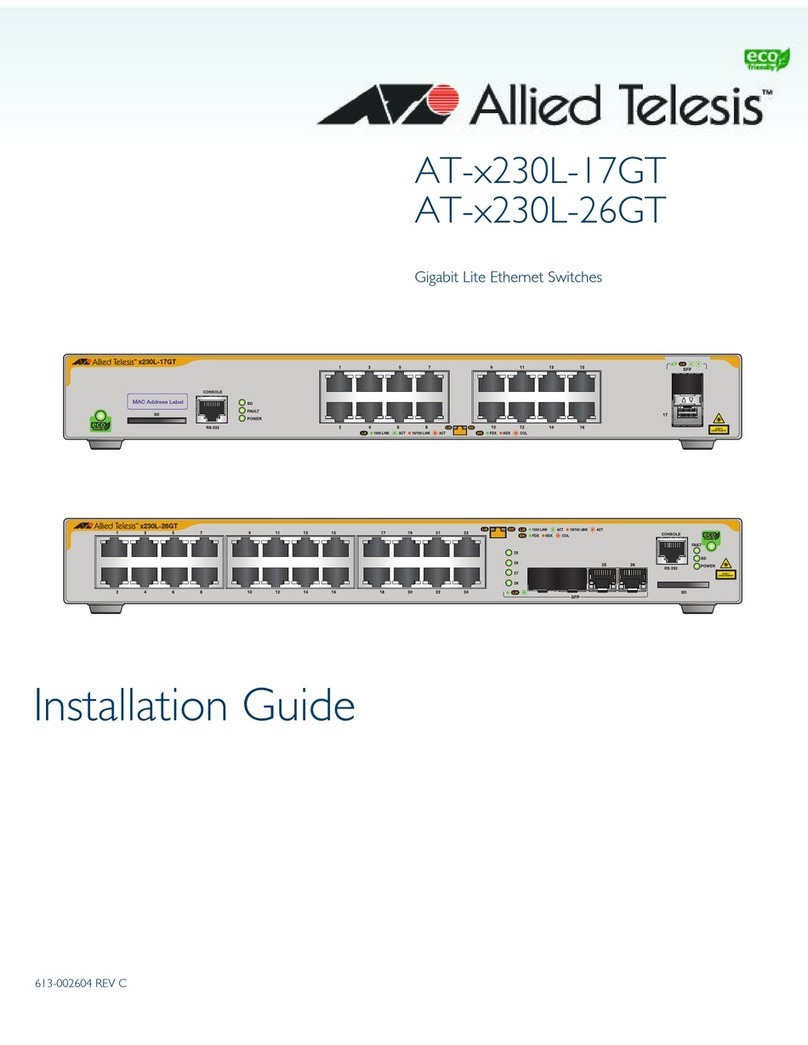
Allied Telesis
Allied Telesis AT-x230L-17GT User manual
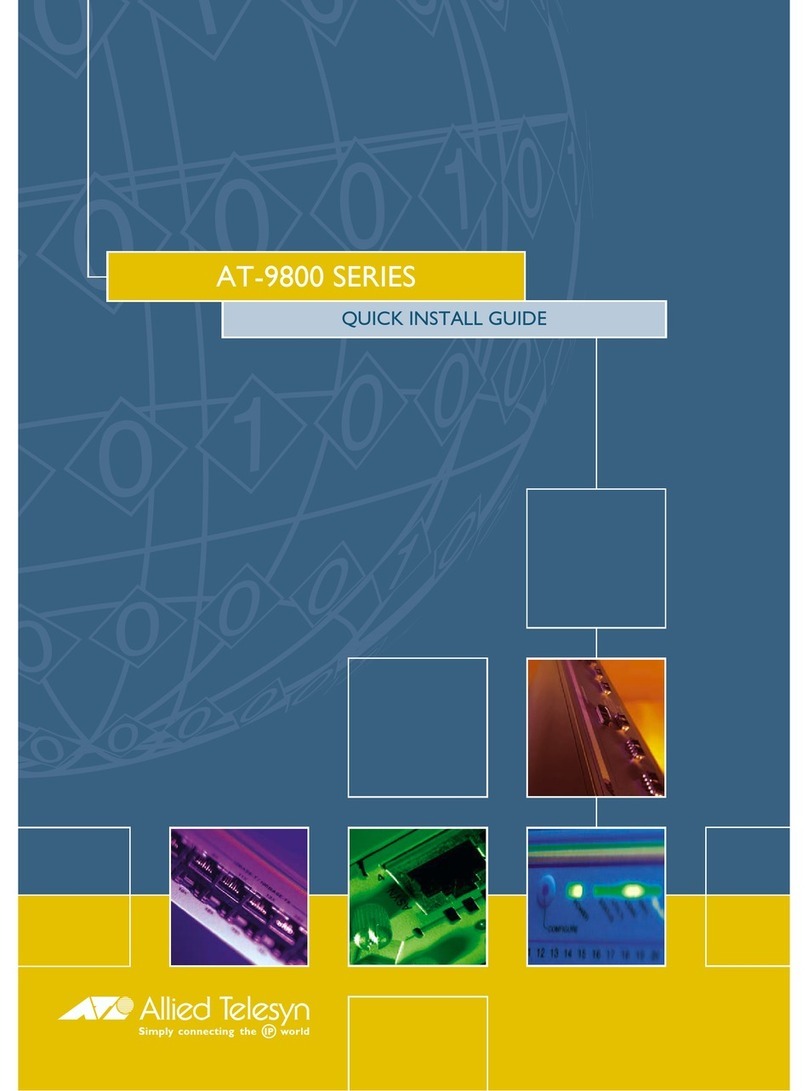
Allied Telesis
Allied Telesis AT-9812T User manual

Allied Telesis
Allied Telesis FS970M Series User manual
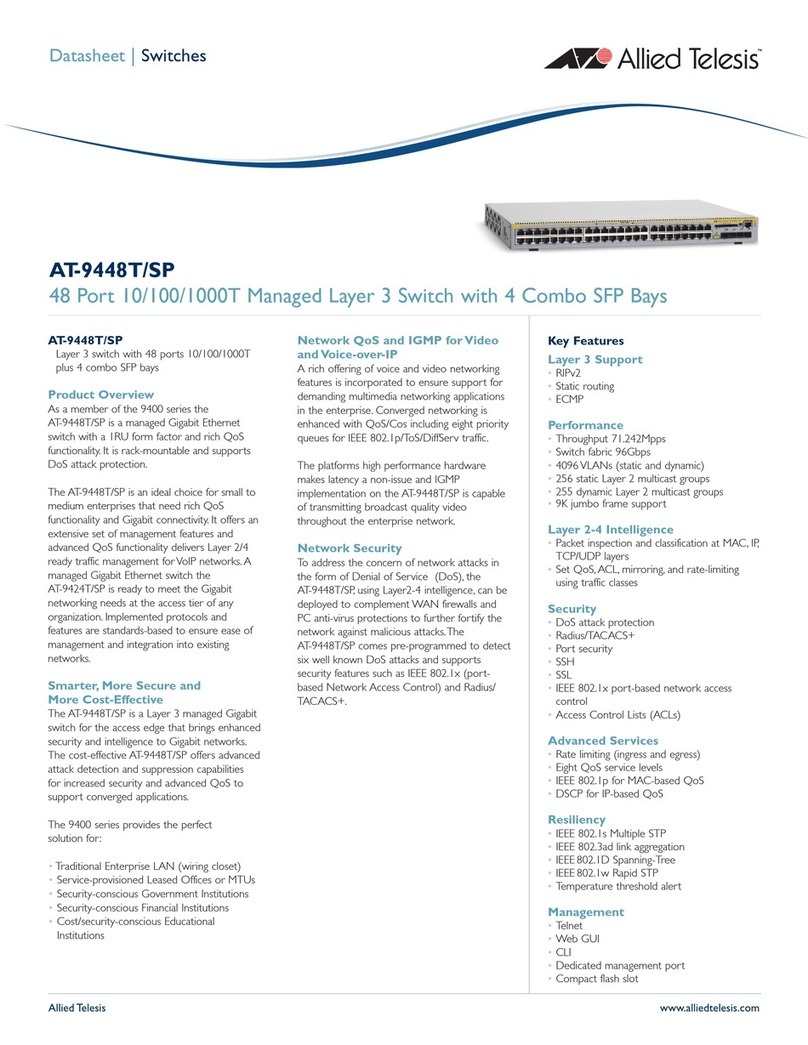
Allied Telesis
Allied Telesis AT-9448T/SP AC User manual
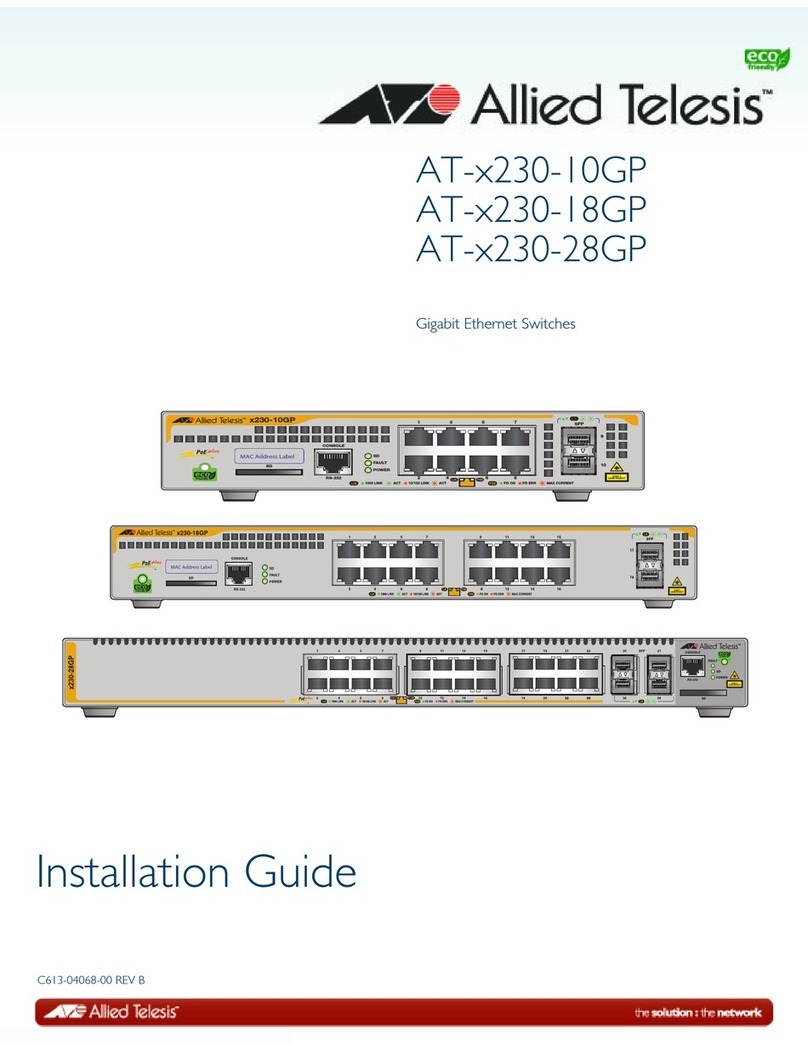
Allied Telesis
Allied Telesis AT-x230-10GP User manual
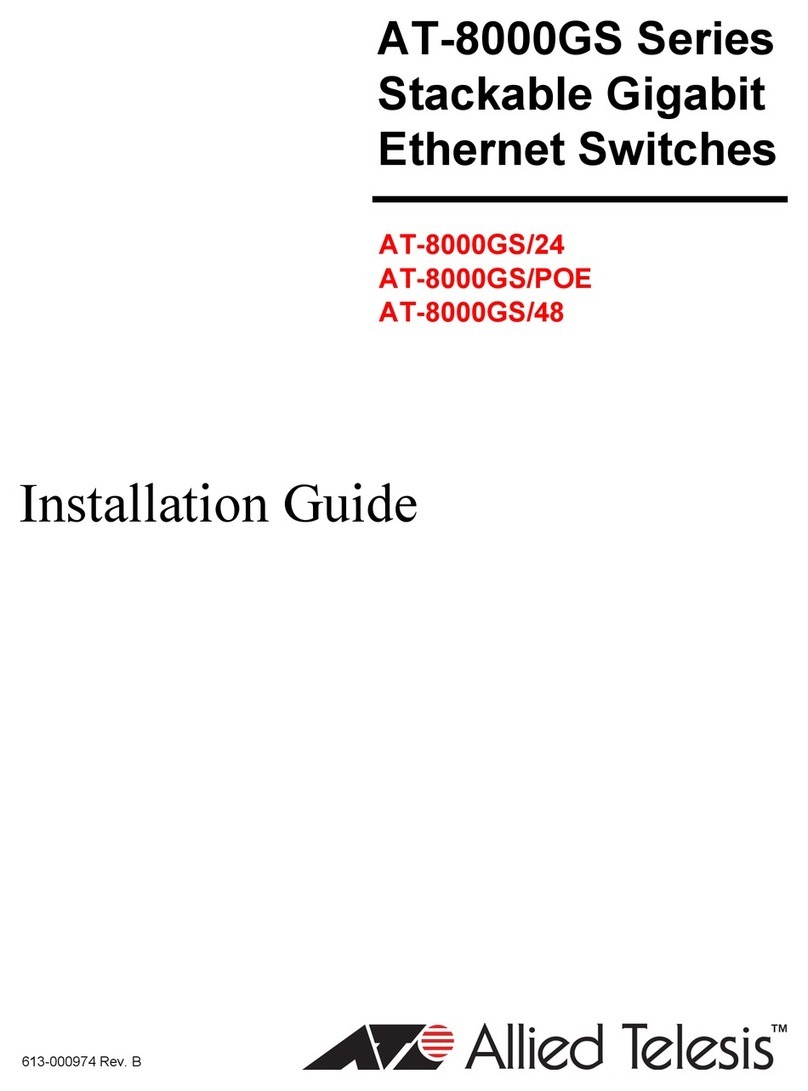
Allied Telesis
Allied Telesis AT-8000GS/24 User manual
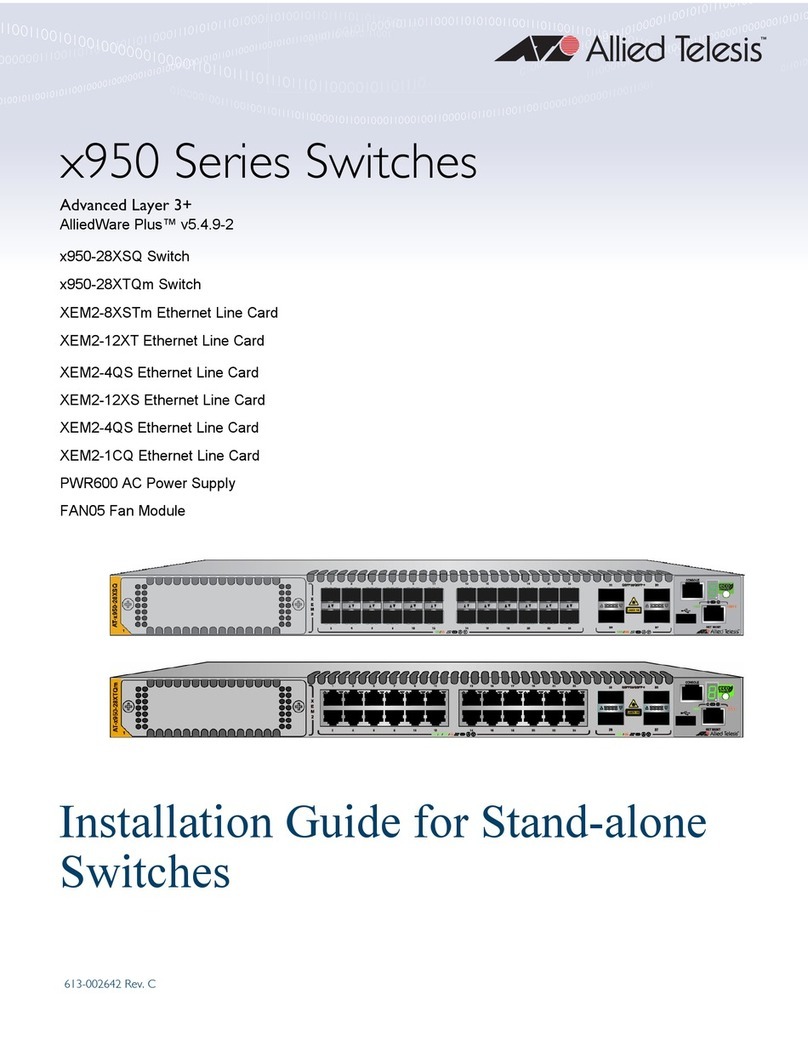
Allied Telesis
Allied Telesis x950 Series User manual
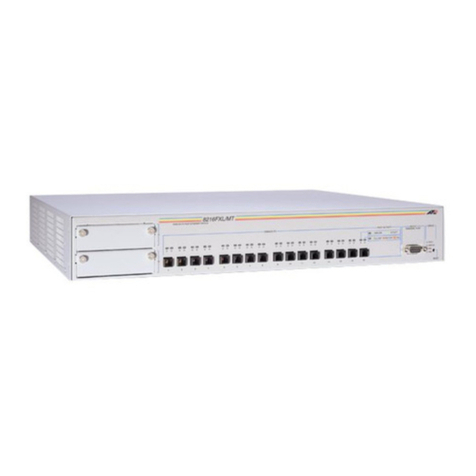
Allied Telesis
Allied Telesis AT-8316F/MT User manual
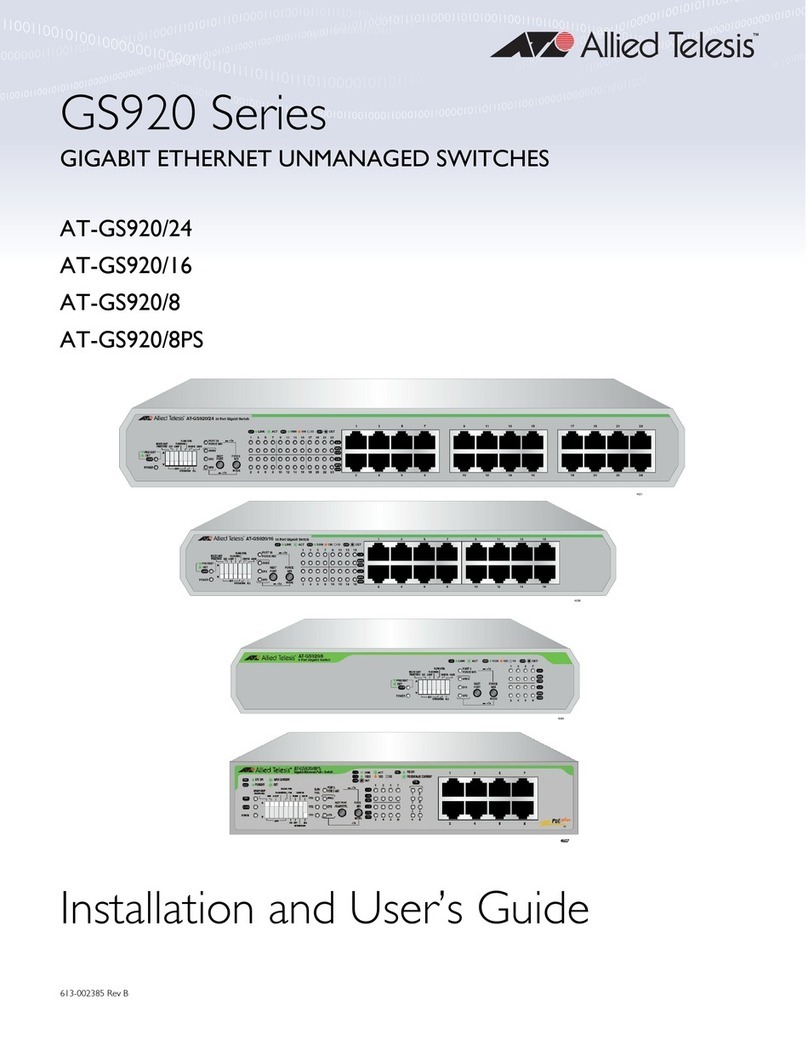
Allied Telesis
Allied Telesis AT-GS920/16 User manual

Allied Telesis
Allied Telesis x600-48Ts User manual

Allied Telesis
Allied Telesis AT-8100S/24C User manual
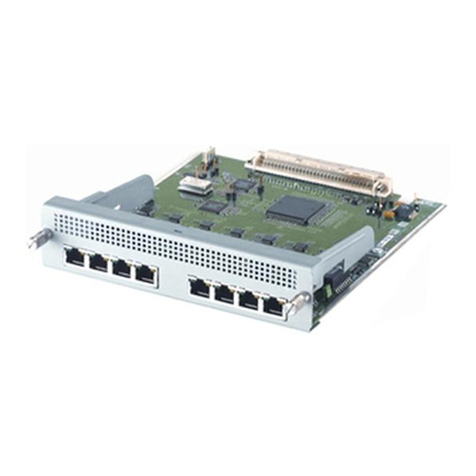
Allied Telesis
Allied Telesis Rapier i AT-RP16Fi/SC User manual
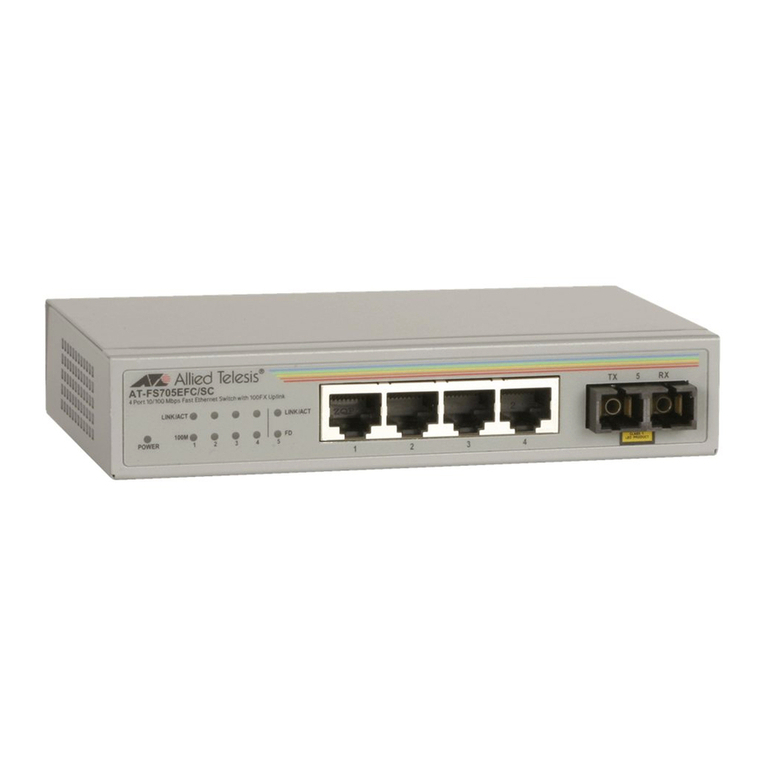
Allied Telesis
Allied Telesis AT-FS705EFC User manual
Popular Switch manuals by other brands

SMC Networks
SMC Networks SMC6224M Technical specifications

Aeotec
Aeotec ZWA003-S operating manual

TRENDnet
TRENDnet TK-209i Quick installation guide

Planet
Planet FGSW-2022VHP user manual

Avocent
Avocent AutoView 2000 AV2000BC AV2000BC Installer/user guide

Moxa Technologies
Moxa Technologies PT-7728 Series user manual

Intos Electronic
Intos Electronic inLine 35392I operating instructions

Cisco
Cisco Catalyst 3560-X-24T Technical specifications

Asante
Asante IntraCore IC3648 Specifications

Siemens
Siemens SIRIUS 3SE7310-1AE Series Original operating instructions

Edge-Core
Edge-Core DCS520 quick start guide

RGBLE
RGBLE S00203 user manual
